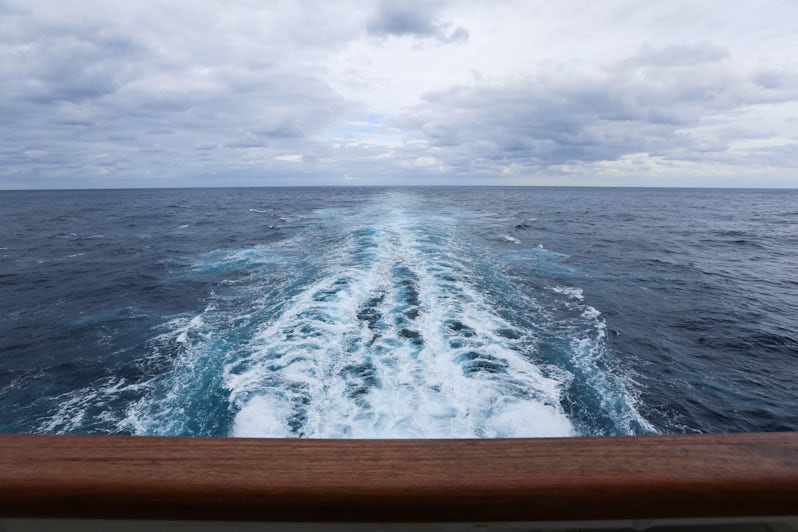
Burning Questions: Decoding the CDC's New Voluntary Cruise Regulations


The CDC has unveiled details of its new voluntary cruise program that was intended to replace the defunct Conditional Sail Order that was in place for nearly two years -- but rather than clearing up the confusion, the CDC's new guidance has created more questions.
The program, which is voluntary, has so far only been committed to by Norwegian Cruise Line Holdings, which includes cruise brands NCL, Regent Seven Seas and Oceania. (NCHL committed before the details of the voluntary program were released.)
It is worth noting that the CDC's new guidance is similar to the Conditional Sail Order that was previously adhered to by cruise lines. Only a few details have changed, but they could affect how cruisers are quarantined onboard or tested if they're suspected of having COVID-19.
What's in store for cruisers who sail on lines that have opted into the CDC's new cruise program? We break down the most notable recommendations and guidelines.
New Vaccination Categories
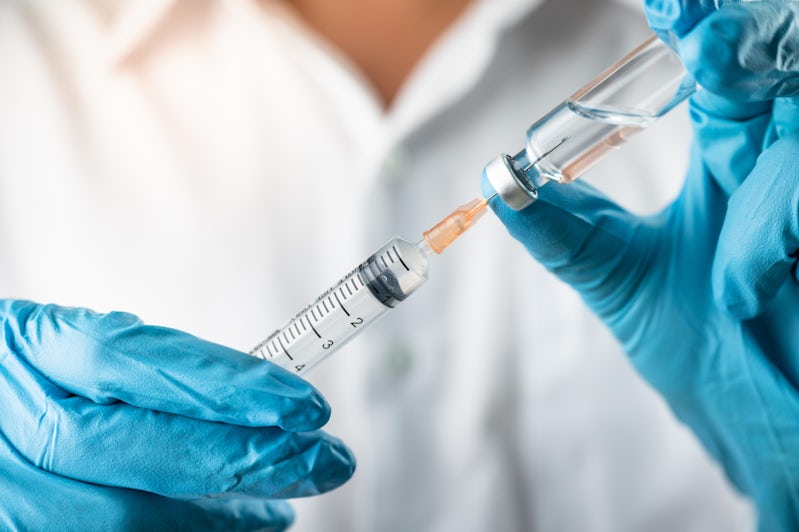
Cruises that have opted-in will be assigned one of three vaccination categories based on the percentage of vaccinated passengers and crew on board.
Ships that receive the "Vaccination Standard of Excellence"– the highest category – will require at least 95% of passengers and crew to be up-to-date with all COVID-19 vaccinations, including boosters.
"Highly Vaccinated" ships will denote ships sailing with at least 95% of passengers and crew fully vaccinated (but less than 95% total that have received all COVID-19 vaccines, e.g. boosters).
Finally, "Not Highly Vaccinated" ships will account for ships that have less than 95% of passengers and crew onboard that are fully vaccinated.
Currently, over 100 vessels meet the criteria for "Highly Vaccinated."
Cruise Line's Response Plans for Handling COVID-19 Cases
Under the new program, the CDC requires that all participating ships have a COVID-19 response plan in place that includes protocols for training all crew in COVID-19; onboard surveillance of passengers and crew that test positive for COVID-19 or other illnesses similar to COVID-19; and testing plans that match CDC technical instructions.
Response protocols will also need to be in place for onboard isolation and quarantine, with consideration for capacity during an outbreak, and for onboard medical staff and hospital-grade equipment for treating positive cases.
Cruise ships will also need to have adequate and available PPE for medical staff, procedures for disembarkation of COVID-19 positive passengers, and a statement of intent that the cruise ship operate will observe all measures of its COVID-19 response plan, inclusive of any public health recommendation updates given by the CDC.
Standardized terminology must also be used to better assess and understand the COVID-19 status of all participating ships. For example, "confirmed COVID-19," "fully vaccinated," "close contact," "quarantine" and "COVID-19-like illness".
Daily Data Reporting
Cruise ships participating in the new program will be required to fill out and submit daily COVID-19 forms to the CDC, which the agency will have discretion to post publicly. This is likely to displease lines, which are already more scrutinized than any other form of travel in the United States.
These forms will identify and flag any COVID-19 or COVID-19-like illnesses on board and will be required for anyone on board who shows symptoms of severe respiratory illness or COVID-19-like symptoms such as fever, cough, trouble breathing, shortness of breath, new loss of taste or smell, or combined symptoms such as runny nose, fatigue, headache, rigors, congestion, vomiting or chills in the absence of a non-infectious diagnosis by the ship doctor (such as allergies).
Enhanced Onboard and Shoreside COVID-19 Testing and Isolation
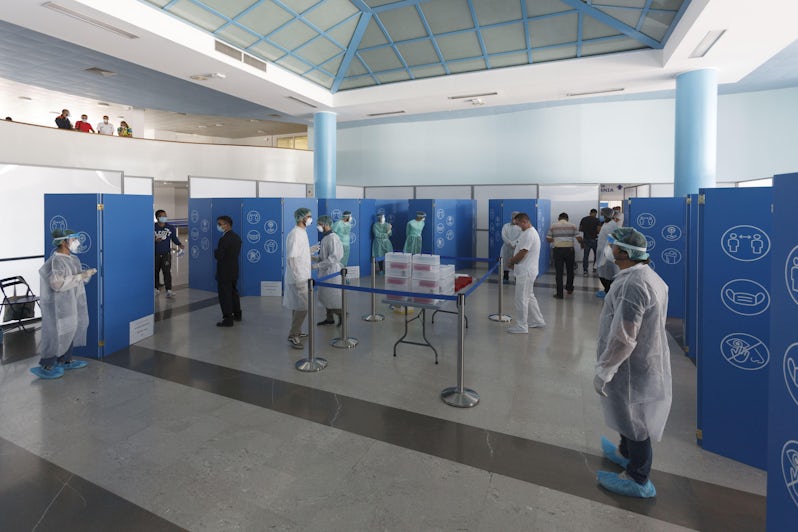
According to the guidelines, crew must be screened before embarking or disembarking in the United States. All crew members must undergo viral testing within a 48-hour period to detect possible positive cases of COVID-19.
Anyone who produces a positive NAAT result must be reported as positive and may not be retested. Considering the margin of error allowing for false positives, we can see this being particularly cumbersome for cruise lines and crew members.
Additionally, all positive cases are considered new cases unless the person is asymptomatic or has proof of recovery from COVID-19 within the last 90 days.
Likewise, any passengers who report COVID-19 or COVID-19-like symptoms will be immediately tested and isolated, regardless of vaccination status. Retesting will not be an option.
Here's where things get really messy. On ships with a Vaccinated Standard of Excellence, close contacts of passengers who test positive for COVID-19 must be tested immediately, quarantined for five full days after their last contact with the infected person, and then retested.
On Highly Vaccinated and Not Highly Vaccinated ships, close contacts must quarantine for 10 days and may only end quarantine if they are asymptomatic and test negative. There are no exceptions to this program -- and no clarity as to whether this 10-day quarantine must be completed onboard, ashore, or both.
The CDC's current guidance for U.S. citizens allows for those with COVID-19 to leave quarantine after five days -- no testing required.
The CDC's guidance on cruise ships in terms of testing and isolation protocols exceeds what is required by the organization even in prisons within the United States -- which are allowed to re-test inmates every three days.
Quarantining Under the New CDC COVID-19 Program
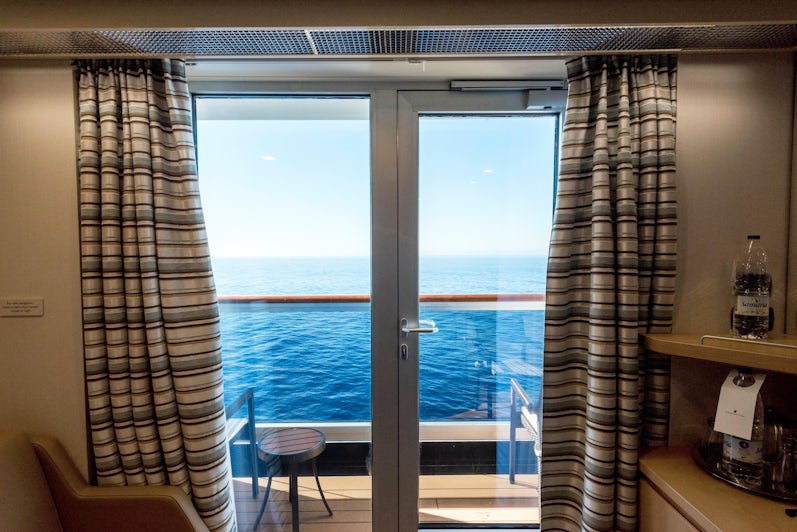
The new CDC program has strict guidelines for quarantined cabins, including the requirement that quarantined individuals be isolated in single-occupancy cabins with their own bathroom
Quarantined guests may not have direct contact with anyone outside of the onboard medical staff, and their cabins may not be serviced by crew. Meals must be served in disposable containers with single-use cutlery and must have contactless delivery.
The CDC also recommends that cruise lines implement surveillance of isolated passengers to make sure they are complying with their quarantine orders.
On ships with a Vaccinated Standard of Excellence, symptomatic isolated passengers may rejoin their cruise after five days if they are asymptomatic or have been fever-free for 24 hours. Confirmed asymptomatic cases will be allowed to leave isolation after five days and with a negative antigen test taken on day five.
On ships with other vaccine classifications, the waiting period bumps up to 10 days -- all of which seemingly must be served onboard.
What Happens to Cruise Lines that Choose Not to Participate in the CDC's COVID-19 Program?
Cruise ships that choose not to participate in the CDC's COVID-19 Program for Cruise Ships are requested to inform the CDC's Maritime Unit of their decision via email by February 18. Any ship that has opted-out of the will be designated as "gray ships" under the CDC's Cruise Ship Color Status.
Passengers can expect CDC-designated gray ships that have opted-out of the program to follow their own COVID-19 rules, health and safety protocols. Crew testing, masking enforcement and vaccination status will solely be handled by the cruise ship without any consultation or oversight from the CDC.
Ships that fail to notify the CDC by the deadline will automatically be considered as opted-out and given a gray color designation. The CDC can also apply new orders to those ships, or issue a No-Sail Order for that vessel until the outbreak is considered resolved.
The order does not apply to U.S.-flagged ships, which will not face any pressure to join the program, nor be required to report to the CDC.
A Breakdown of the CDC's Cruise Ship Color Status
The CDC's Cruise Ship Color Status designations are nothing new and were created under the Conditional Sailing Order to help travelers make better informed decisions around travel and cruising.
In a nutshell, a ship's color -- green, yellow, orange, red or gray -- indicates the numbers of active COVID cases reported on board. A ship's color status will also denote whether the ship has leveled-up on onboard public health protocols, if a ship needs to be investigated or is being monitored and, most recently, if a ship has opted out of the new voluntary COVID-19 program.
Green ships have no reported COVID-19 cases on board; yellow ships have cases numbers below the threshold for CDC investigation; orange ships are at the threshold for onboard case numbers; red ships have positive case numbers above the threshold and are implementing additional health measures; gray ships have not been reviewed or monitored by the CDC and include ships that have voluntarily opted-out of the COVID-19 Program for Cruise Ships.
A single case of COVID-19, suspected or confirmed, is all it takes to shift a vessel's color status.
So, What Does it All Mean for Cruisers?
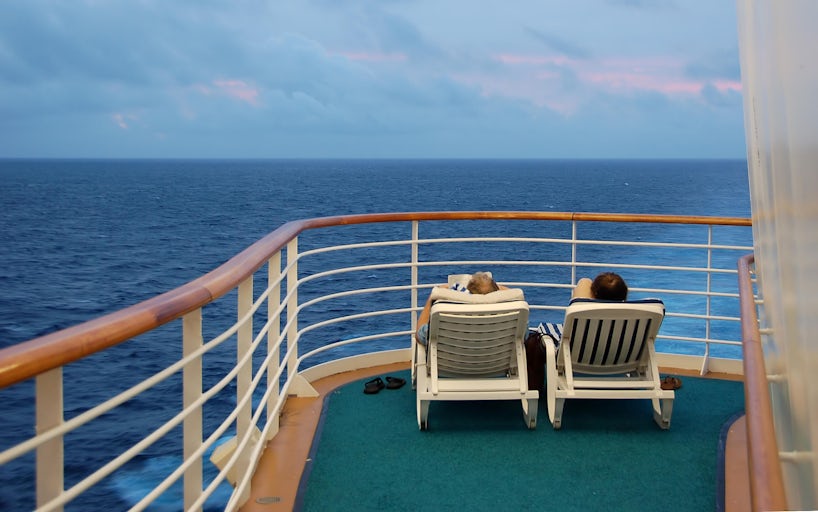
While the program's strict regulations will no doubt be a major pain point for cruise lines, we're hoping it might just be a good turn of events for cruisers. As a voluntary program, it allows cruisers to choose between either more relaxed or stricter cruise options, ultimately allowing more cruisers to get back out on sailings.
For unvaccinated cruisers and cruisers who have been waiting for cruise ships to loosen COVID-19 restrictions, this might just be the boon they've needed to get back onboard ships.
However, cruisers who might find a gray ships' lack of regulation or accountability disconcerting, probably will have the option to book a cruise on a cruise ship with tight, regulated and monitored COVID-19 precautions.
Call it a cruising compromise. Whether it's the solution that sticks around remains to be seen.